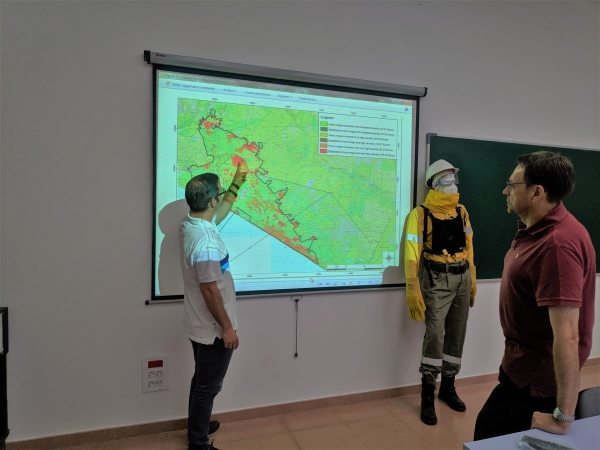Almost 300,000€ is what the Doñana fire cost in terms of biodiversity, according to an estimate done by a University of Cordoba research group. The fire occurred in 2017 and destroyed about 8,500 hectares, most of which were part of Doñana National Park, home to a number of emblematic species. The fire destroyed the habitat of a group of Iberian lynxes, one of the most symbolic endangered species on the Iberian Peninsula. These lynxes had to escape and move to another home. The breeding grounds for the Iberian lynxes in El Acebuche also had to evacuate its animals, one of which, a female, died from stress endured during the capture and transport.
“When calculating financial losses from a fire, the cost of the impact on species that live there is never taken into account,” says Ricardo Zamora, who along with Juan Ramón Molina and Francisco Rodríguez y Silva from the Forestry Engineering Department, performed this research. “It was necessary to assign value to biodiversity and to do so, it was important to provide figures,” he declares.
The research team wanted to insist on the importance of biodiversity by calculating the financial cost of the effects of forest fires on emblematic species, something that had not been done before in Europe. The research focused on two different 2017 fires: one in Doñana, and one in Segura, in which 830 hectares burned. It is challenging to measure the value of the biodiversity of a forest as a whole, hence, they decided to choose some emblematic Mediterranean species, such as the Iberian Lynx and the Spanish imperial eagle.
The research was performed via two avenues. The first took into account money invested in conservation programs and species protection programs. The second performed surveys in order to estimate the amount that citizens were willing to pay to protect emblematic species. “Society is always willing to pay more to conserve its emblematic species even though the difference is much greater, for example, in the case of the Spanish imperial eagle compared to the case of the Iberian lynx,” says Juan Ramón Molina.
The results offer data in terms of euros lost per hectare of forest fire in connection with the two fires. In the Doñana fire, in which an Iberian lynx died and a group of lynxes lost their entire habitat, the financial losses are estimated to be between 209,619 € and 295,838€, factoring in money invested in the conservation program, and between 295,838€ and 322,733€ in terms of the amount society is willing to spend to conserve these species. Moreover, for the Segura fire, which was much smaller and caused no deaths to emblematic species, they estimate the figures to be between 634 and 777 euros in the first case and 3,116€ and 3.258€ in the second.
This study is part of a project to create a tool to financially assess forest fires, called Visual Seveif. This tool would comprehend tangible resources – those with a market price – as well as intangible resources, such as carbon fixation or, as is the case at hand, biodiversity. The research team has also worked on incorporating the variable of leisure and tourism into the financial assessment, that is to say, the landscape value that a forest has and its value as a recreational place.
The project, that began in 2010, concludes by including variables of biodiversity as well as leisure and tourism in the tool, though they are open to studying new variables. “We are contemplating improving the tool by means of incorporating other variables like housing and soil erosión,” says Juan Ramón Molina. Though to do so, according to the researcher, a lot of work remains to be done.
J.R. Molina, R. Zamora, F. Rodríguez y Silva. “The role of flaghip species in the economic valuation of wildfire impacts: an application to two Mediterranean protected areas”. Science of the Total Environment. DOI: 10.1016/j.scitotenv.2019.04.242


